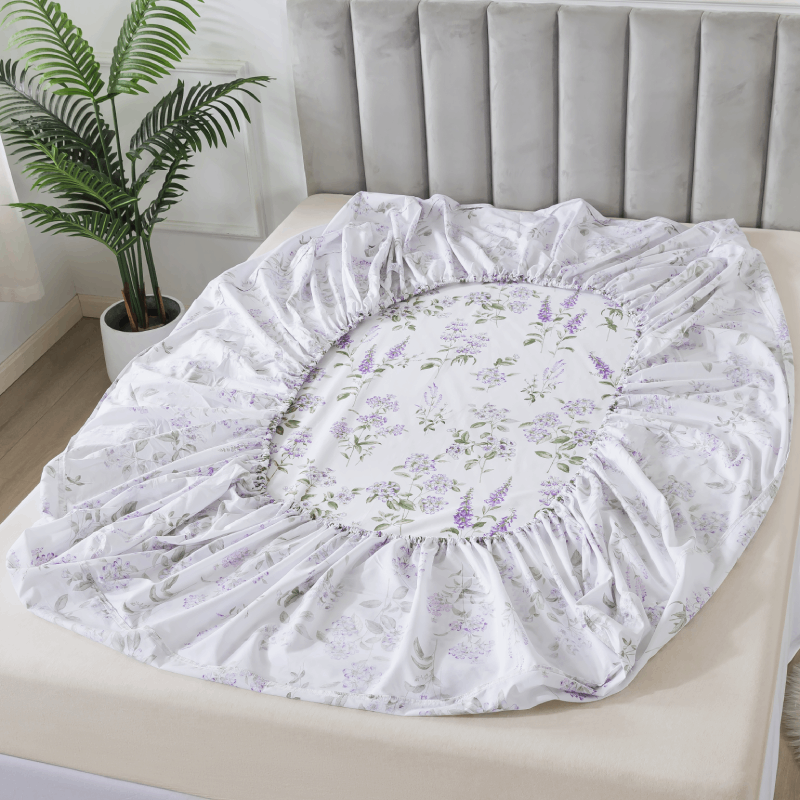When it comes to bedding, the wide variety of options available can be overwhelming. Among the most common pieces of bedding, quilts and coverlets are often confused due to their similar appearances. However, these two items have distinct differences in style, functionality, and design. Understanding the differences between a quilt and a coverlet can help you make the best choice for your bedroom décor and comfort.
Let’s explore the key features of both quilts and coverlets to help you determine which option best suits your needs.
What is a Quilt?
A quilt is a multi-layered blanket that typically consists of three layers: a top fabric layer, a middle layer of batting (or insulation), and a bottom layer. These three layers are stitched together using intricate patterns, making quilts not just functional but also visually appealing.
Key Characteristics of Quilts:
- Warmth: Quilts are generally thicker than coverlets due to the extra layer of batting. This makes them ideal for colder climates or for those who prefer heavier bedding for warmth.
- Traditional Aesthetic: Quilts often feature patchwork designs or decorative stitching, which gives them a timeless, traditional look. They add a cozy, homey feel to any bedroom.
- Versatility: While quilts are typically used as a bedspread, they can also serve as an additional layer of warmth in colder months. They are equally functional as decorative throws for sofas or chairs.
When to Choose a Quilt:
- You live in a cooler climate or prefer a warm, layered bed.
- You enjoy classic or rustic bedroom décor.
- You want a multi-functional piece that can be used in various ways around the house.
What is a Coverlet?
A coverlet, on the other hand, is a lightweight bedspread that typically does not include batting. Unlike a quilt, a coverlet is usually a single layer and is meant for decorative purposes, though it can offer some warmth during mild weather.
Key Characteristics of Coverlets:
- Lightweight: Coverlets are thinner and lighter than quilts, making them perfect for warmer climates or for those who prefer lighter bedding. They are typically used as a decorative layer on top of a bed.
- Modern Aesthetic: Coverlets often have a clean, streamlined design. They are available in a variety of fabrics, from cotton to silk, and can feature simple or textured patterns. This makes them ideal for modern or minimalist bedroom styles.
- Layering Piece: While coverlets can be used alone in warmer months, they also work well as a top layer over a heavier blanket or comforter in colder weather.
When to Choose a Coverlet:
- You live in a warmer climate or prefer lightweight bedding.
- You have a modern or minimalist décor style.
- You want a versatile layering piece that can transition between seasons.
Quilt vs. Coverlet: Side-by-Side Comparison
|
Feature |
Quilt |
Coverlet |
|
Weight |
Thicker and heavier |
Lightweight and thin |
|
Warmth |
Ideal for colder weather |
Suitable for mild weather |
|
Style |
Traditional, often with patchwork |
Modern, streamlined |
|
Function |
Adds warmth, decorative, multi-use |
Primarily decorative, layering |
|
Best Season |
Fall/Winter |
Spring/Summer |
|
Fabric Layers |
Three layers (top, batting, bottom) |
Single layer |
How to Choose Between a Quilt and a Coverlet
Choosing between a quilt and a coverlet depends on several factors, including your personal comfort preferences, the climate you live in, and the overall style of your bedroom.
Climate and Seasonality: If you live in a cooler climate or enjoy feeling bundled up at night, a quilt may be your best option. On the other hand, if you live in a warm or tropical climate, or want a light cover for summer months, a coverlet is the perfect choice.
Décor Style: Quilts, with their traditional designs, are excellent for classic, rustic, or farmhouse-style bedrooms. Coverlets, with their minimalist design, are ideal for more contemporary, modern, or sleek bedroom aesthetics.
Versatility: Both quilts and coverlets are versatile, but in different ways. If you want something that can provide both warmth and decoration, a quilt may be more practical. However, if you're looking for a decorative layer that can be used year-round, a coverlet offers that flexibility.
Layering Preferences: If you enjoy the look of a layered bed, a coverlet can be a great addition to your bedding ensemble. It can be placed over a quilt, comforter, or blanket to add visual interest and texture.
Care and Maintenance
When it comes to maintaining the beauty and longevity of your bedding, both quilts and coverlets require proper care.
Quilts: Since quilts are typically more intricate, featuring layers and delicate stitching, they may require more careful handling. Most quilts can be machine-washed on a gentle cycle, but always check the care instructions, especially for handmade or vintage quilts.
Coverlets: Coverlets are generally easier to care for due to their simple construction. They are usually machine washable, and because of their lightweight nature, they dry quickly. Again, always refer to the manufacturer’s care instructions for the best results.
Final Thoughts: Quilt or Coverlet?
Ultimately, both quilts and coverlets offer unique benefits depending on your personal needs and preferences. If you prioritize warmth and a cozy, traditional look, a quilt might be the best choice for your bedroom. If you prefer lightweight bedding and a more modern aesthetic, a coverlet could be the perfect solution.
No matter which option you choose, both quilts and coverlets are beautiful additions to any bed, offering both functionality and style. Consider your climate, décor, and how you want to feel when you climb into bed at night to make the best decision for your bedroom.


















